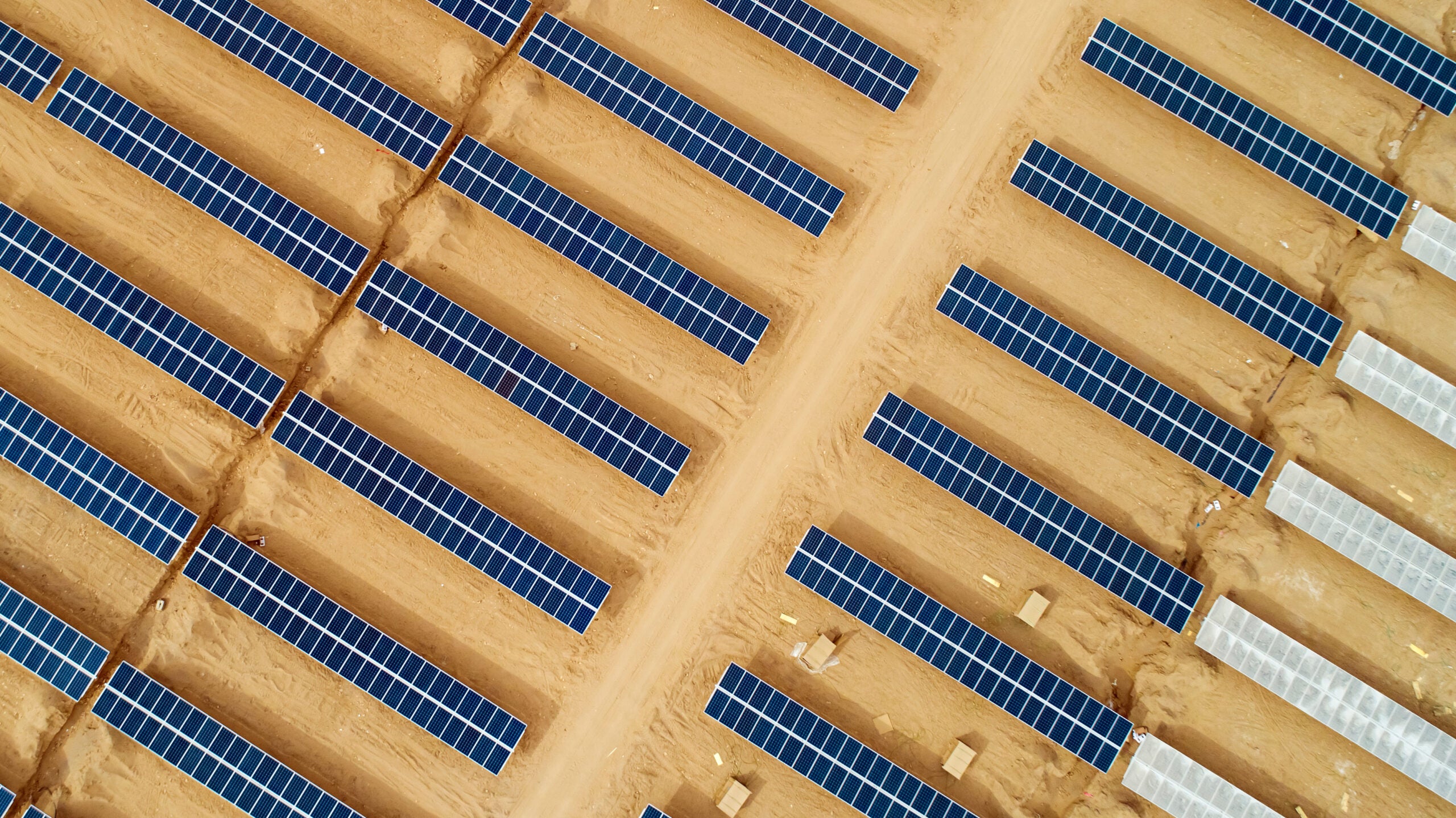Solar is the world’s fastest-growing energy technology. In 2019, the installed solar capacity reached 600GW globally compared to 20GW ten years ago. However, the semiconductor material in 90% of solar panels is just silicon and, according to the Shockley-Queisser limit, panels made from only one material have a maximum efficiency of 30%. If the solar industry is to progress, another material must be introduced. The most promising option is perovskite.
The Shockley-Queisser limit is determined by the amount of energy a semiconductor can capture from a photon, a particle that transmits light. One photon can move one electron from the valence band, the lower electronic energy state, to the conduction band, the higher state. The maximum energy extracted from a photon is, therefore, equivalent to the energy difference between these bands, known as the band gap. For there to be a flow of electrons to generate electricity, there must be a sufficient number of photons with energies similar to the band gap.
How well do you really know your competitors?
Access the most comprehensive Company Profiles on the market, powered by GlobalData. Save hours of research. Gain competitive edge.

Thank you!
Your download email will arrive shortly
Not ready to buy yet? Download a free sample
We are confident about the unique quality of our Company Profiles. However, we want you to make the most beneficial decision for your business, so we offer a free sample that you can download by submitting the below form
By GlobalDataAs well as being abundant and stable, silicon’s band gap is well matched to the optical spectrum. However, printing a thin perovskite layer on top of the conventional silicon panels enables them to use the higher-energy photons, particles of blue light, as well. This increases the efficiency of the solar panel.
Oxford PV, a university spin-off, and Swift Solar, a San Francisco start-up, are examples of companies that specialise in the research and manufacturing of perovskite-silicon solar cells. These tandem solar cells can reach a peak efficiency of 29.1% with a theoretical limit of 43%. In contrast, traditional silicon panels have achieved a peak efficiency of 25.6% and have an average commercial efficiency of only 18%.
Perovskite is a thin, flexible and lightweight crystal structure. The material can be cheaply laminated onto the glass layer of solar panels from a solution. Perovskite has a good tolerance of defects and impurities, in contrast to silicon, so the material can be deposited simply by printing or spraying.
The tandem cells will have a positive impact on the solar industry as the manufacturing process is not energy-intensive and reduces material waste, decreasing the cost of solar-panels tenfold. The return on the initial energy investment for perovskite tandems is just four months compared to 18 months for silicon photovoltaics. These cheaper, more efficient panels will no doubt generate higher demand for solar cells as consumers grow more energy-conscious.
Additionally, the manufacturing process is easily integrated into the existing fabrication line for silicon-based panels. As a result, it will not take long to initiate the production of tandem cells at solar panel factories across the globe. Oxford PV has an assembly line that is due to start production at the end of the year, following its acquisition of a German thin-film factory in 2016. Other promising companies include Saule Technology, a Polish company that has partnered with Skanska and tailors perovskite solar cells to office buildings (but not domestic customers at the time of writing).
The Shockley-Queisser means that using silicon-only cells is holding back progress. Perovskite’s low cost and high efficiency certainly make it a strong contender to be the material that helps solar take the next step in its development.
The only cloud on the horizon is a lack of evidence that the product will last for 25 years, the average lifetime of a traditional solar panel, as perovskite was only discovered ten years ago. The risk is one that investors may not be willing to take right now.







Related Company Profiles
Skanska AB
Swift Solar Inc.
Oxford PV